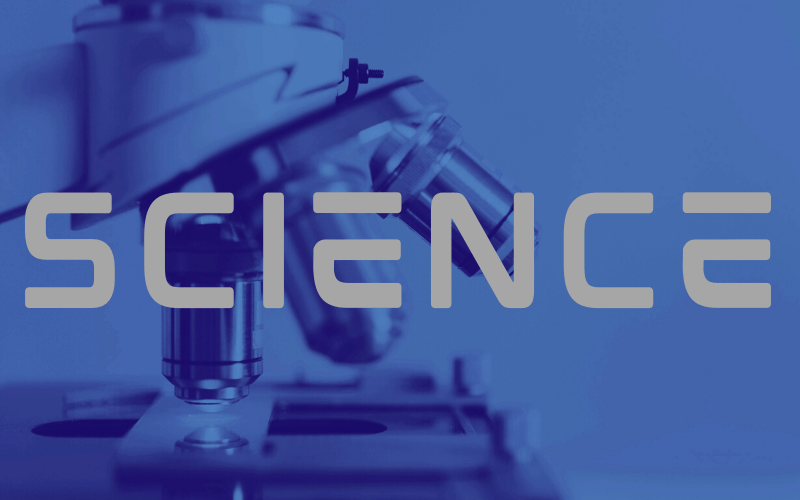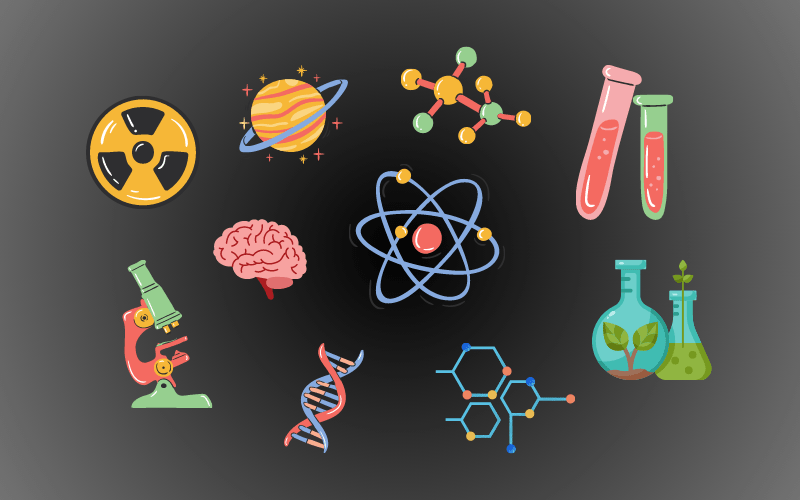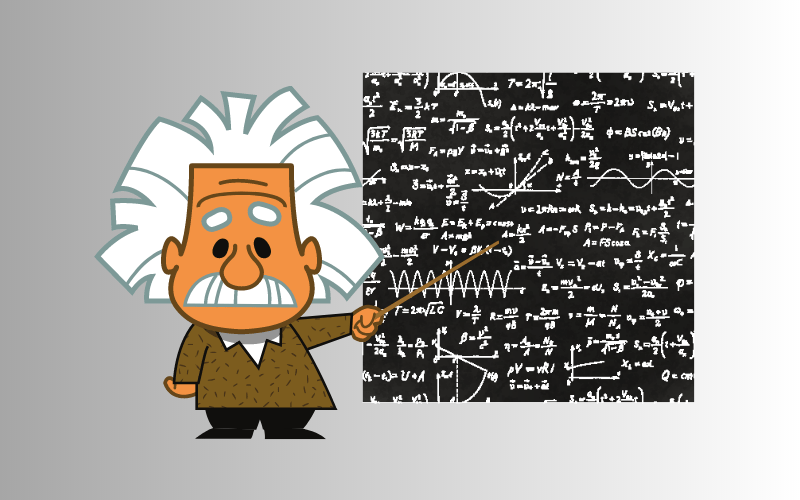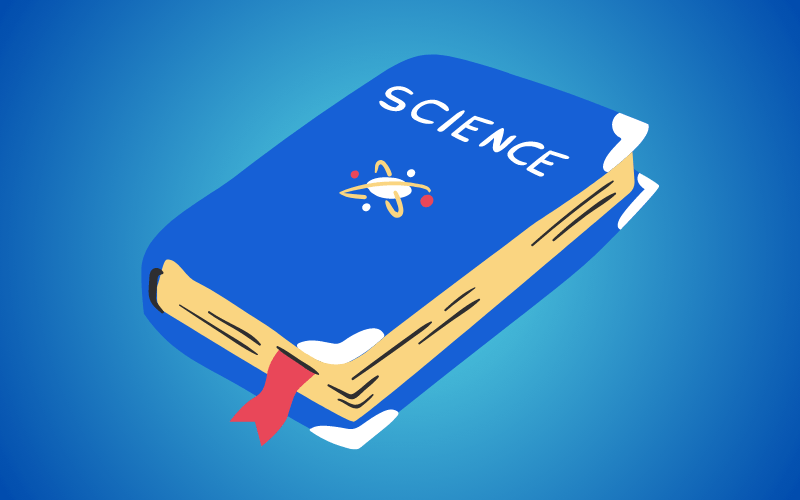
Science trivia is an excellent topic to challenge yourself. These 180 science trivia questions and answers were written below covering many fields of science, the foundations of science, and a varying number of scientific concepts. Whether it be studying the fields of science that exist, the diverse theories, or understanding scientific methods in general, science is arguably one of the most prized academic topics, and these concepts are all here.
If you are looking for a step up in difficulty, the 180 science trivia questions below will definitely present that test, that is unless of course, you are extremely well versed in the topic of science already. If you are someone who loves science, you will definitely enjoy these 180 science trivia questions; they span the gamut of variety and provide a solid level of difficulty. Use them for your next trivia night!
Contents
| 180 Science Trivia Questions & Answers 1.1 Play 180 Science Trivia Questions 1.2 Read 180 Science Trivia Questions & Answers Science Trivia Questions & Answers by Category 1.3 The Branches and Subcategories of Science Trivia Questions & Answers 1.4 Important Scientists Trivia Questions & Answers 1.5 Laws, Models, & Theories of Science Trivia Questions & Answers 1.6 Science History & Fun Facts Trivia Questions & Answers 1.7 Scientific Terms Trivia Questions & Answers Related Content 1.8 Play Math Trivia 1.9 Play Computer & Technology Trivia 2.0 Play Animal Trivia 2.1 Play Video Game Trivia 2.2 Play Random Trivia |
Play 180 Science Trivia Questions Quiz

Read 180 Science Trivia Questions & Answers
The following 180 science trivia questions and answers include the fields of study, the utilized terms, laws, models, history, and more. Every researchable field and speciality has been included in these questions. Challenge yourself and see how much you know!
The Branches and Subcategories of Science Trivia

Science is a broad field of study that encompasses many different disciplines. Some of the most common branches of science include, biology, chemistry, and physics, but there are more, and many more subcategories that specialize in these fields for specific types of problem solving. These branches of science are constantly evolving and new branches are emerging all the time. As our understanding of the world around us grows, so does the field of science.
If the vast variety of branches in science interests you, read on for the branches and subcategories of science trivia questions and answers.
The Branches and Subcategories of Science Trivia Questions & Answers
1. What is the engineering branch called that combines engineering physics and mathematics principles with materials science to design, analyze, manufacture, and maintain mechanical systems?
Mechanical Engineering
2. What is the study of the Universe as a whole called?
Physical Cosmology
3. What is the study of ancient diseases in humans and nonhumans through the examination of “human mummified and skeletal remains, ancient documents, illustrations from early books, painting and sculpture from the past, and analysis of coprolites called?
Paleopathology
4. What is the applied science that studies ecological processes applied to agricultural production systems called?
Agroecology
5. What field of science applies the principles of evolutionary theory and optimization to the study of human behavioral and cultural diversity, while examining the adaptive design of traits, behaviors, and life histories of humans in an ecological context?
Human Behavioral Ecology or Human Evolutionary Ecology
6. What is the branch of zoology that focuses on the scientific study of insects?
Entomology
7. What type of social science studies how people interact with value, in particular, the production, distribution, and consumption of goods and services?
Economics
8. What is the engineering discipline concerned with the study, design and application of equipment, devices and systems which use electricity, electronics, and electromagnetism called?
Electrical Engineering
9. What is the science and technology of producing and using plants in agriculture for food, fuel, fiber, recreation, and land restoration called?
Agronomy
10. Which field of science is devoted to the study of the lands, features, inhabitants, and phenomena of the Earth and planets?
Geography
11. What is the interdisciplinary study of how people in the past understood the phenomena in the sky, how they used these phenomena, and what role the sky played in their cultures called?
Archaeoastronomy
12. What is the scientific discipline that involves the study of the chemical, physical, geological, and biological processes and reactions that govern the composition of the natural environment called?
Biogeochemistry
13. What is the scientific study of functions and mechanisms in a living system, that focuses on how organisms, organ systems, individual organs, cells, and biomolecules carry out the chemical and physical functions in a living system called?
Physiology
14. What is the branch of astronomy concerned with objects outside the Milky Way galaxy called?
Extragalactic Astronomy
15. Which form of engineering is a professional engineering discipline that deals with the design, construction, and maintenance of physical and naturally built environments?
Civil Engineering
16. What is the branch of physics that deals with heat, work, and temperature, and their relation to energy, radiation, and physical properties of matter called?
Thermodynamics
17. What is the name of the scientific discipline involved with elements and compounds composed of atoms, molecules and ions, their composition, structure, properties, behavior and the changes they undergo during a reaction with other substances?
Chemistry
18. What type of engineering is a certain type of engineering that deals with the study of operation and design of chemical plants as well as methods of improving production?
Chemical Engineering
19. What is the scientific study of viruses called?
Virology
20. What is the scientific study of humanity, concerned with human behavior, human biology, cultures, and societies, in both the present and past, including past human species called?
Anthropology
21. Logic, mathematics, and theoretical computer science are considered part of which branch of modern science?
Formal Sciences
22. What is the subject of geology specializing in the scientific study of the chemistry, crystal structure, and physical properties of minerals and mineralized artifacts called?
Mineralogy
23. What is the science of the causes and effects of diseases, especially the branch of medicine that deals with the laboratory examination of samples of body tissue for diagnostic or forensic purposes called?
Pathology
24. What is the interdisciplinary field that seeks to understand the analysis, processing, and transmission of information using quantum mechanics principles called?
Quantum Information Science
25. What type of natural science studies matter, its motion and behavior through space and time, and the related entities of energy and force?
Physics
26. What is the science, art and practice of cultivating plants and livestock called?
Agriculture
27. What is the scientific study of life that existed prior to, and sometimes including, the start of the Holocene Epoch, and includes the study of fossils to classify organisms and study interactions with each other and their environments called?
Paleontology
28. What is the branch of metallurgical engineering, which is a field of material science, wherein process and methods of extraction of metals from their natural mineral deposits are studied?
Extractive Metallurgy
29. Which field of science involves the systematic study of valid rules of inference, where the relations that lead to the acceptance of the conclusion is based on a set of other premises?
Logic
30. What is the science that deals with the origination, distribution, and control of disease in groups of relatives and with inherited causes of disease in populations called?
Genetic Epidemiology
31. What two branches of science is natural science usually divided into?
Life Science and Physical Science
32. What is the study of human activity through the recovery and analysis of material culture called?
Archaeology
33. What are the set of sciences applying portions of natural science or formal science, or both, to develop knowledge, interventions, or technology that are of use in healthcare or public health called?
Biomedical Sciences
34. Which branch of science studies formal language disciplines concerned with formal systems, such as logic, mathematics, statistics, theoretical computer science, artificial intelligence, information theory, game theory, systems theory, decision theory, and theoretical linguistics?
Formal Science
35. What is the study of the relationships between living organisms, including humans, and their physical environment called?
Ecology
36. What is the scientific study of primates called?
Primatology
37. What is the scientific study of microorganisms, those being unicellular, multicellular, or acellular called?
Microbiology
38. What is the scientific study of diseases in plants caused by pathogens and environmental conditions called?
Phytopathology or Plant Pathology
39. Which field of science includes the study of such topics such as number theory, algebra, geometry, and analysis?
Mathematics
40. What interdisciplinary scientific field considers the question of whether extraterrestrial life exists, and if it does, how humans can detect it?
Astrobiology
41. What is the branch of chemistry focused on the application of quantum mechanics to chemical systems called?
Quantum Chemistry
42. What is the specialty area of biological and astronautical research which encompasses numerous aspects of biological, behavioral, and medical concern governing humans and other living organisms in a space flight environment called?
Bioastronautics
43. What is the scientific discipline concerned with the study of roundworms called?
Nematology
44. What is the discipline within archaeology that specifically studies human interaction with the sea, lakes and rivers through the study of associated physical remains called?
Maritime Archaeology or Marine Archaeology
45. What is the name of the field that uses scientific principles to design and build machines, structures, and other items, including bridges, tunnels, roads, vehicles, and buildings?
Engineering
46. What is the study of how organisms decay and become fossilized or preserved in the archaeological record called?
Taphonomy
47. What field of science is a subset of general computer science that focuses on mathematical aspects of computer science such as the theory of computation, lambda calculus, and type theory?
Theoretical Computer Science or TCS
48. What is the specialized area in the science of metallurgy that studies the mechanical means of crushing, grinding, and washing, that enables the separation of valuable metals or minerals from their waste material called?
Mineral Processing
49. What is the subdivision of microbiology that studies the morphology, ecology, genetics and biochemistry of bacteria as well as many other aspects related to them called?
Bacteriology
50. What is the branch of science bordering on agronomy and physics, whose objects of study are the biological objects, biotope and biocoenosis affected by human activity, studied and described using the methods of physical sciences?
Agrophysics
51. What is the study of plasmas as they occur naturally in the Earth’s upper atmosphere and within the Solar System called?
Space Physics or Solar-terrestrial Physics
52. What is the branch of biology that covers the study of immune systems in all organisms called?
Immunology
53. Which science is the science of mind and behavior, and includes the study of conscious and unconscious phenomena, as well as feeling and thought?
Psychology
54. What is the branch of geography that is associated and deals with humans and their relationships with communities, cultures, economies, and interactions with the environment by studying their relations with and across locations called?
Anthropogeography or Human Geography
55. What is the social science that deals with systems of governance and power, and the analysis of political activities, political thoughts, political behavior, and associated constitutions and laws called?
Political Science
56. What kind of science is the study of society, human social behavior, patterns of social relationships, social interaction, and culture that surrounds everyday life?
Sociology
57. What is the field of scientific research that explores the interactions between the physical Earth and the biosphere called?
Geobiology
58. What is the discipline that concerns the collection, organization, analysis, interpretation, and presentation of data called?
Statistics
59. What is the branch of astronomy that involves precise measurements of the positions and movements of stars and other celestial bodies called?
Astrometry
60. Engineering and medicine are considered what kind of sciences?
Applied Sciences
61. What is the study of parasites, their hosts, and the relationship between them called?
Parasitology
62. Biology, chemistry, and physics are considered part of which branch of modern science?
Natural Sciences
63. What is the art, science, and practice of caring for a patient and managing the diagnosis, prognosis, prevention, treatment or palliation of their injury or disease called?
Medicine
64. What is the subfield of anthropology concerned with the biological and behavioral aspects of human beings, their extinct hominin ancestors, and related non-human primates, particularly from an evolutionary perspective called?
Biological Anthropology or Physical Anthropology
65. What is the scientific discipline devoted to the study of protists, a highly diverse group of eukaryotic organisms called?
Protistology
66. What is the interdisciplinary field of science that covers the design and discovery of new materials, particularly solids?
Materials Science
67. What is the study of the Milky Way galaxy and all its contents called?
Galactic Astronomy
68. Disciplines that use existing scientific knowledge for practical purposes, are described as what?
Applied Sciences
69. Which branch of biology is the science of plant life?
Botany
70. What type of natural science studies celestial objects and phenomena, using mathematics, physics, and chemistry in order to explain their origin and evolution?
Astronomy
71. Which type of natural science studies life and living organisms, including their physical structure, chemical processes, molecular interactions, physiological mechanisms, development and evolution?
Biology
72. What is the art of cultivating plants in gardens to produce food and medicinal ingredients, or for comfort and ornamental purposes called?
Horticulture
73. What is the division of astronomy that is concerned with recording data about the observable universe?
Observational Astronomy
74. What is the subfield of biology that studies evolutionary processes, such as natural selection, common descent, and speciation, that produced the diversity of life on Earth called?
Evolutionary Biology
75. What is the branch of medicine and pharmaceutical sciences concerned with drug or medication action, where a drug may be defined as any artificial, natural, or endogenous molecule which exerts a biochemical or physiological effect on the cell, tissue, organ, or organism called?
Pharmacology
76. What is the branch of biology concerned with the study of fungi, including their genetic and biochemical properties, their taxonomy and their use to humans as a source for tinder, traditional medicine, food, and entheogens, as well as their dangers, such as toxicity or infection called?
Mycology
77. What is the branch of anthropology that is the systematic study of individual cultures, and explores cultural phenomena from the point of view of the subject of the study called?
Ethnography
78. What is the domain of materials science and engineering that studies the physical and chemical behavior of metallic elements, their inter-metallic compounds, and their mixtures called?
Metallurgy
79. Economics, psychology, and sociology are considered part of which branch of modern science?
Social Sciences
80. What is the application of the anatomical science of anthropology and its various subfields, including forensic archaeology and forensic taphonomy, in a legal setting called?
Forensic Anthropology
81. What is the science that employs the methods and principles of physics in the study of astronomical objects and phenomena called?
Astrophysics
82. What is the science or art involved with the study, design, and manufacturing of air flight–capable machines, and the techniques of operating aircraft and rockets within the atmosphere called?
Aeronautics
83. What is the branch of physics involving the study of a type of physical interaction that occurs between electrically charged particles called?
Electromagnetism
84. What is the branch of biology that studies the animal kingdom, including the structure, embryology, evolution, classification, habits, and distribution of all animals, both living and extinct, and how they interact with their ecosystems called?
Zoology
251 Math Trivia Questions & Answers
Fascinating trivia facts from every field of math. Click the play now button to begin.
Important Scientists Trivia

There have been quite a few scientists who have left important imprints on the field and study of every type of science. These men and women have helped improve human existence in many different ways, with distinct contributions occurring due to the work and time put in. We as a society should be extremely grateful, as these efforts have made modern society much easier and more comfortable as a result.
If you are interested in these important scientists, read on for important scientists trivia questions and answers.
Important Scientists Trivia Questions & Answers
85. Who first proposed and tested The Law of Conservation of Energy?
Émilie du Châtelet
86. Who was the 17th and 18th century English mathematician, physicist, astronomer, and theologian, that is widely recognized as one of the key figures of the scientific revolution, and the author of Philosophiæ Naturalis Principia Mathematica, which established classical mechanics?
Isaac Newton
87. Who created the Big Bang theory?
Georges Lemaître
88. Who popularized the term “natural selection”?
Charles Darwin
89. Who was the 17th century Anglo-Irish natural philosopher, chemist, physicist, and inventor, that is largely regarded today as one of the founders of modern chemistry, and one of the pioneers of the modern experimental scientific method?
Robert Boyle
90. Who was the 16th century Italian astronomer, physicist and engineer, called the father of observational astronomy, modern physics, the scientific method, and of modern science?
Galileo Galilei
91. Who was the American philosopher of science that wrote the 1962 book The Structure of Scientific Revolutions, introducing the term “paradigm shift”?
Thomas Kuhn
92. What is the title of the book by Isaac Newton, that analyzes the fundamental nature of light by means of the refraction of light with prisms and lenses, the diffraction of light by closely spaced sheets of glass, and the behavior of color mixtures with spectral lights or pigment powders?
Opticks: or, A Treatise of the Reflexions, Refractions, Inflexions and Colours of Light
93. What is the philosophical and scientific system of René Descartes and its subsequent development by other seventeenth century thinkers called?
The Cartesian Method
94. Who was the ancient Greek astronomer and mathematician who presented the first known heliocentric model, that placed the Sun at the center of the known universe?
Aristarchus of Samos
95. Which philosopher, mathematician and scientist famously said, “I think, therefore I am”?
René Descartes
96. Who created the modern atomic theory of the universe?
John Dalton
97. Who was the author of On the Origin of Species by Means of Natural Selection, or the Preservation of Favoured Races in the Struggle for Life?
Charles Darwin
98. Who wrote Naturalis Historia, also known as The Natural History, which is one of the largest single works to have survived from the Roman Empire, and the predecessor to the modern encyclopedia?
Pliny the Elder
99. Who was the French biologist, microbiologist, and chemist renowned for his discoveries of the principles of vaccination, microbial fermentation, and pasteurization?
Louis Pasteur
100. Who was the English naturalist, geologist and biologist, best known for his proposition that all species of life have descended over time from common ancestors?
Charles Darwin
101. Who was the author of the 1661 book The Sceptical Chymist: or Chymico-Physical Doubts & Paradoxes, which is considered a cornerstone book in the field of chemistry?
Robert Boyle
231 Computer & Technology Trivia Questions with Answers
Fun trivia facts from every field of computer science. Click the play now button to begin.
Laws, Models, & Theories of Science Trivia

The laws, models, and theories of science have developed successfully over time, due to the enormous amount of research and testing conducted by thousands of individuals. It is undeniable, that these efforts have shaped our modern world and allowed the others that have come after them to expound upon these foundational principles, and make real change in our current society.
I you enjoy reading about these scientific principles, read on for laws, models, and theories of science trivia question and answers.
Laws, Models, & Theories of Science Trivia Questions & Answers
102. Which principle asserts that the force acting on, or buoying, a submerged or partially submerged object equals the weight of the liquid that the object displaces?
Archimedes’ Buoyancy Principle
103. What is the theoretical framework used to conceive social situations among competing players and produce optimal decision-making of independent and competing actors in a strategic setting called?
Game Theory
104. Which scientific principle asserts that it is impossible to simultaneously know, with a high level of precision, two properties of a particle, meaning, you can know the position of an electron with a high degree of certainty, but not its momentum and vice versa?
Heisenberg’s Uncertainty Principle
105. How many fundamental laws have been traditionally recognized in thermodynamics?
Three
106. Albert Einstein’s theory of relativity encompasses what two interrelated theories?
Special Relativity and General Relativity
107. What created the ancient atomic theory of the universe?
Democritus
108. Which scientific laws were cleverly summed up with the following three statements? You can’t win. You can’t break even. You can’t quit the game
The Laws of Thermodynamics
109. Who proposed the theory of relativity?
Albert Einstein
110. What is the scientific theory that states that matter is composed of particles called atoms?
Atomic Theory
111. Prior to germ theory, what was the predominant theory called which believed that diseases were caused by the presence of poisonous vapor in the air from decomposed matter, characterized by a foul smell?
Miasma Theory
112. What does this equation represent? F = G × [(m1m2)/r2]
The Universal Law of Gravitation
113. Which law of science describes the inversely proportional relationship between the absolute pressure and volume of a gas, if the temperature is kept constant within a closed system?
Boyle’s Law
114. What is the use of the analytical models of physics and chemistry to describe astronomical objects and astronomical phenomena called?
Theoretical Astronomy
115. What describes the orbits of the planets around the sun by stating that the orbit of a planet is an ellipse with the Sun at one of the two foci, a line segment joining a planet and the Sun sweeps out equal areas during equal intervals of time, and the square of a planet’s orbital period is proportional to the cube of the length of the semi-major axis of its orbit?
Kepler’s Laws of Planetary Motion
116. In theoretical physics, what is the theoretical framework that combines classical field theory, special relativity and quantum mechanics, and is used in particle physics to construct physical models of subatomic particles and in condensed matter physics to construct models of quasiparticles called?
Quantum Field Theory
117. Which theory postulates that the universe began almost 14 billion years ago with a massive expansion event, where initially the universe was confined to a single point, encompassing all of the universe’s matter?
The Big Bang Theory
118. What scientific law does this equation represent? Velocity = H×distance
Hubble’s Law of Cosmic Expansion or Hubble’s law
119. What is the currently accepted scientific theory for many diseases, which states that microorganisms known as pathogens can invade humans, other animals, and other living hosts, grow, reproduce, and cause disease?
The Germ Theory of Disease
120. How many laws of motion did Isaac Newton state?
Three Laws
121. What is the study of the structure and dynamics of the Sun through its oscillations called?
Helioseismology
122. What are statements, based on repeated experiments or observations, that describe or predict a range of natural phenomena called?
Scientific Laws or Laws of Science
123. What is the theory and practice of travel beyond Earth’s atmosphere into outer space called?
Astronautics or Cosmonautics
124. What is the astronomical model in which the Earth and planets revolve around the Sun at the center of the Universe called?
Heliocentrism
125. What law of physics and chemistry states that, the total energy of an isolated system remains constant; it is said to be conserved over time?
The Law of Conservation of Energy
126. What is the name of the philosophical and scientific doctrine inspired by the beliefs and methods of natural philosopher Isaac Newton?
Newtonianism
127. What is the fundamental theory in physics that provides a description of the physical properties of nature at the scale of atoms and subatomic particles called?
Quantum Mechanics
128. What is an explanation of an aspect of the natural world and universe that can be repeatedly tested and verified in accordance with the scientific method, using accepted protocols of observation, measurement, and evaluation of results called?
A Scientific Theory
575 Animal Trivia Questions & Answers
Fun trivia facts about every animal you could possibly think of. Click the play now button to begin.
Science History & Fun Facts Trivia

The history of science is incredibly interesting. The developments that had to occur in order for our scientific knowledge to grow are immeasurable in value. There are quite a few key moments that took place during our scientific history that have enabled us to improve in our civilizations. They also happen provide us with excellent fun facts to test ourselves and friends about.
If you enjoy science history and fun facts, read on for science history and fun facts trivia questions and answers.
Science History & Fun Facts Trivia Questions & Answers
129. Who proposed gravitational waves in 1905?
Henri Poincaré
130. The term “empirical” comes from the greek word empeiría; what does empeiría translate to in English?
Experience
131. What is a procedure carried out to support, refute, or validate a hypothesis, by providing insight into cause-and-effect, demonstrating what outcome occurs when a particular factor is manipulated called?
An Experiment
132. In what century did we see the birth of science as a profession?
The 19th Century
133. What language does the term “science” stem from?
Latin
134. In Aristotelian thought, what are the four fundamental types of answers to the question “why?” called?
The Four Causes or the Four Explanations
135. How many basic steps are there in the scientific method?
Five
136. The term “science” comes from the latin word scientia; what does scientia mean in English?
Knowledge
137. What is a material containing unstable nuclei considered to be?
Radioactive
138. What are the three branches of modern science?
Natural, Social, and Formal
139. What is the 2nd-century Greek-language mathematical and astronomical treatise on the apparent motions of the stars and planetary paths, written by Claudius Ptolemy called?
The Almagest
140. What is the process of creating nuclear energy, which originates from splitting uranium atoms called?
Fission
141. What is the change in the heritable characteristics of biological populations over successive generations, which are the expressions of genes that are passed on from parent to offspring during reproduction, with different characteristics existing within any given population as a result of mutation, genetic recombination and other sources of genetic variation called?
Evolution
142. What are disturbances in the curvature of spacetime, generated by accelerated masses, that propagate as waves outward from their source at the speed of light called?
Gravitational Waves
143. What is the major principle of the scientific method called, which means that a result obtained by an experiment or observational study should be achieved again with a high degree of agreement when the study is replicated with the same methodology by different researchers?
Reproducibility
144. What is the type of scientific research that aims at improving scientific theories for better understanding and prediction of natural or other phenomena called?
Basic Research, Pure Research or Fundamental Research
145. What is the process by which humans use animal breeding and plant breeding to selectively develop particular phenotypic traits by choosing which typically animal or plant males and females will sexually reproduce and have offspring together called?
Selective Breeding or Artificial Selection
146. What language does the term “empirical” stem from?
Greek
147. How many Nobel Prizes are awarded each year?
Five
148. What is the understanding and application of the fundamental principles and laws of nature that allow us to transform raw material and energy into products that are useful to society, at an industrial level called?
Process Engineering
149. What is a theatre built primarily for presenting educational and entertaining shows about astronomy and the night sky, or for training in celestial navigation called?
A Planetarium
150. In what century did the scientific revolution begin?
The 16th Century
151. Who coined the term “scientist”?
William Whewell
152. In Aristotelian thought, what are the four fundamental types of answers to the question “why?”
Material, Formal, Efficient, and Final
153. What is creative and systematic work undertaken to increase the stock of knowledge, that involves the collection, organization, and analysis of information to increase understanding of a topic or issue called?
Research
154. What is the practical application of science, that accesses and uses accumulated theories, knowledge, methods, and techniques, for a specific, state, business, or client-driven purpose called?
Applied Research
155. What was the name of the international scientific research project with the goal of determining the base pairs that make up human DNA, and of identifying and mapping all of the genes of the human genome from both a physical and a functional standpoint?
The Human Genome Project or HGP
156. What kind scientist specializes in the science of plant life?
A Botanist
125 Video Game Trivia Questions & Answers
Video game trivia fun facts on every console ever created. Click the play now button to begin.
Scientific Terms Trivia

Scientific terms were created in order to help us understand the intertwining complexity of scientific concepts. Some have almost become as common as the regular nomenclature used in our everyday conversations. That in itself is what makes the concept such an excellent trivia category.
If you like testing yourself on scientific terms, continue on for scientific terms trivia questions and answers.
Scientific Terms Trivia Questions & Answers
157. What is the term for the use of scientific methodology to study science itself, seeking to increase the quality of scientific research by using research methods to study how research is done and where improvements can be made?
Metascience or Meta-research
158. What is the scientific principle called, where evidence from independent, unrelated sources can converge on strong conclusions?
Consilience
159. What is the term for the phenomena that occurs when a wave encounters an obstacle or opening, and the wave bends around the corners of an obstacle or opening, into the region of geometrical shadow of the obstacle or opening?
Diffraction
160. What is the application of ballistics and celestial mechanics to the practical problems concerning the motion of rockets and other spacecraft, usually calculated from Newton’s laws of motion and law of universal gravitation called?
Orbital Mechanics or Astrodynamics
161. What does “DNA” stand for?
Deoxyribonucleic Acid
162. What is the application of engineering principles and practices to the purposeful manipulation of molecules of biological origin called?
Biomolecular Engineering
163. What is the method of logic or reasoning where a conclusion is reached reductively by applying general rules which hold over the entirety of a closed domain of discourse, narrowing the range under consideration until only the conclusion remains, and there is no uncertainty?
Deductive Reasoning
164. What is the superseded description of the Universe, with Earth at the center called?
Geocentrism
165. What is the study of stars in astronomy called?
Stellar Astronomy
166. What is the term for the method of procedure that has characterized natural science since the 17th century, consisting in systematic observation, measurement, and experiment, and the formulation, testing, and modification of hypotheses?
The Scientific Method
167. What is the term for a property applying to an empirical hypothesis, which involves the two components of falsifiability or defeasibility, and the practical feasibility of observing a reproducible series of such counterexamples if they do exist?
Testability
168. What is the term for the tendency to search for, interpret, favor, and recall information in a way that confirms or supports one’s prior beliefs or values, typically to achieve a desired outcome?
Confirmation Bias
169. In biology, what is the basic unit of classification and a taxonomic rank of an organism, as well as a unit of biodiversity, often defined as the largest group of organisms in which any two individuals of the appropriate sexes or mating types can produce fertile offspring, typically by sexual reproduction called?
A Species
170. What is a proposed scientific explanation for a phenomenon, that requires that one can test it using the scientific method, and is generally based on previous observations that cannot satisfactorily be explained with the available scientific theories?
A Hypothesis
171. In physics, what is the quantitative property that must be transferred to an object in order to perform work on, or to heat the object called?
Energy
172. What does “RNA” stand for?
Ribonucleic Acid
173. What is the term in biology for any organism that can produce disease, also referred to as an infectious agent, or a germ?
A Pathogen
174. What kind of engineering is the direct manipulation of an organism’s genes using biotechnology?
Genetic Engineering
175. What is the practice and science of categorization or classification based on discrete sets called?
Taxonomy
176. What is the time a given astronomical object takes to complete one orbit around another object, and applies in astronomy usually to planets or asteroids orbiting the Sun, moons orbiting planets, exoplanets orbiting other stars, or binary stars called?
The Orbital Period
177. What is the smallest unit of ordinary matter that forms a chemical element called?
An Atom
178. What type of information is received by means of the senses, particularly by observation and documentation of patterns and behavior through experimentation, which verifies the truth or falsity of a claim?
Empirical Evidence
179. What is the method of reasoning in which the premises are viewed as supplying some evidence, but not full assurance, of the truth of the conclusion?
Inductive Reasoning
180. What is the term for the process by which green plants and some other organisms use sunlight to synthesize foods from carbon dioxide and water?
Photosynthesis
Play Random Trivia Now!
Play random trivia questions from one of our many trivia categories. Click the play now button to begin.
Recent Posts
Step into a realm of nostalgia as we embark on a journey through the annals of pop culture and bid farewell to 35 recently obsolete technologies. In the ever-evolving landscape of innovation, certain...





